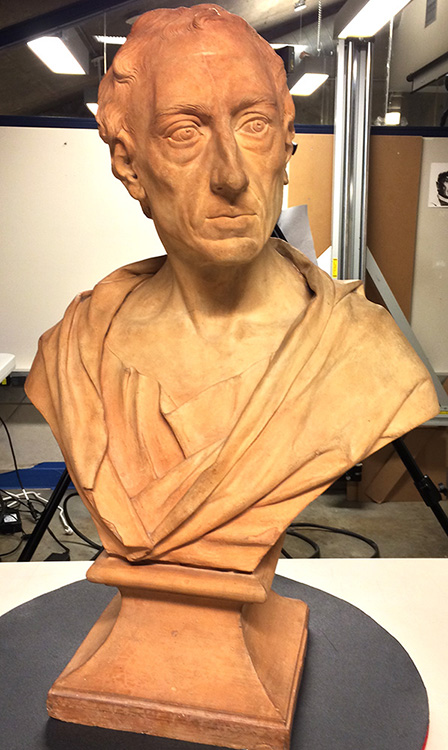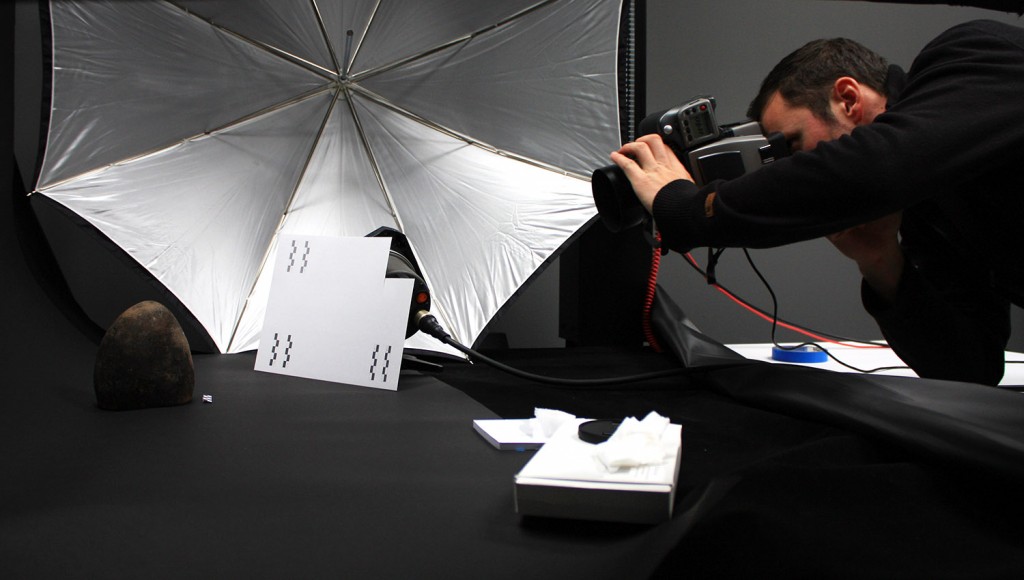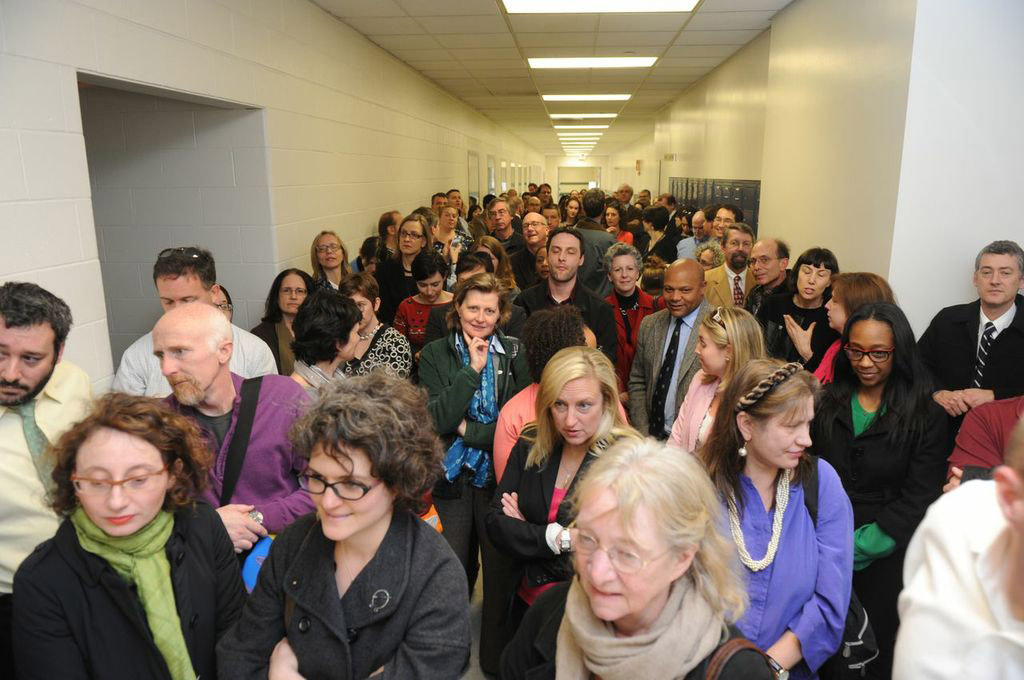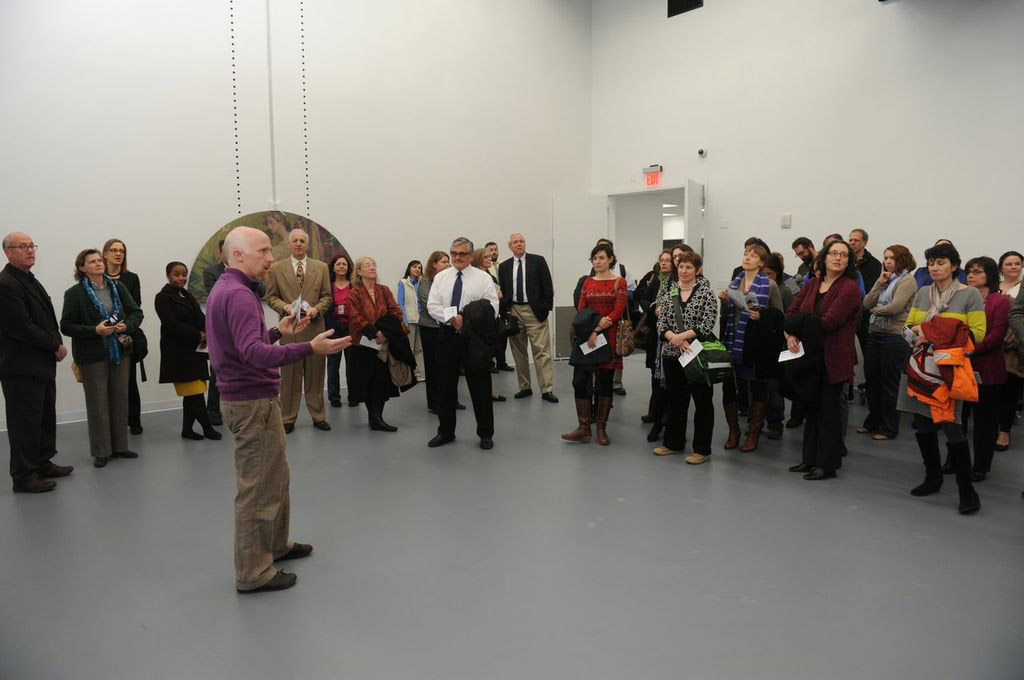The Babylonian project is moving forward in the Imaging Lab.
All of the cuneiform tablets have undergone three of the four planned imaging processes. During RTI, each object was placed on a support under the RTI dome. Imaging was carried out for each face and each edge for a total of six images for each rectangular tablet. The data obtained through RTI will be processed in specialized software where light direction can be manipulated and shaders can be applied to emphasize the surface geometry of the face of the object. This data will then be further processed to create a 3D model for each face of the object.
Cuneiform is one of the earliest known systems of writing and is distinguished by the wedge shaped marks in the clay tablets. These wedge shapes were made by pressing a reed stylus into the clay. In addition to the inscribed text, many tablets were also impressed with cylinder seals. When rolled across the wet clay, these seals left behind raised images and text that identified the seal owner and thus functioned much like a ‘signature’ does today. By manipulating the light in the final RTI visualizations, the shadows emphasize not only the depressions in the clay but the raised sections as well.
Once the objects were imaged in the RTI array, they were then imaged with a 3D laser scanner. Small objects were secured on a sturdy stand and were scanned with a NextEngine laser scanner. The scanner coordinated with the stand and rotated it automatically. The larger objects were scanned with a ShapeGrabber laser scanner on a manually mechanized turntable. The point clouds obtained through the scanning process were coarsely aligned, cleaned, merged, and reconstructed in editing software (MeshLab) to yield comprehensive 3D models of the objects.
Multispectral Imaging was then performed on each of the demonstration pieces which will be used to check for traces of pigment. Eight images were taken for each band (violet, dark blue, light blue, green, yellow, orange, light red, red). Multispectral imaging includes not only the visible range but ultraviolet (UV) and infrared (IR) as well.
The last thing we have left to do is to photograph the objects with our Hasselblad camera. Objects will be placed on a backdrop lined copystand and photographed under strobe lighting. Images will then be edited and processed in image manipulation software (Photoshop).
We have lots of data to process and 3D models to make!! Stay tuned for part 3!

This object is actually one half of a clay envelope. It once held a clay letter. After the author had finished writing and the clay letter dried, a piece of clay was wrapped around it and sealed as the ‘envelope’. While we don’t have the original letter, the clay of the envelope was still wet when it was sealed around the letter. What you are actually looking at is the inside of the envelope and seeing the ‘mirror’ image of the letter that impressed on the wet clay of the envelope. By scanning this piece, we hope to invert the image to make reading the text of the letter easier.

RTI array in action as it photographs one of the clay tablets with 45 different lights from 45 different directions.

Since the clay tablets had writing all over, they needed to be propped up so that RTI images could be obtained of each edge of the tablets. This will give us a complete set of images of all of the writing on the tablet. This is the tablet in which Gimillu is accused of hiring a contract killer.

Ying Yang checks to make sure there are 45 image files of the object being lit from 45 different angles–one for every light on the RTI array.

This sealed envelope from the Old Assyrian period gets a spin on the turn style to get scanned for a 3D model. Notice the round impressions stamped into the clay from an individual’s ‘signature’ seal.

This tablet is a student’s work of the multiplication table by 5’s. Here it is going for a 360 degree spin to get scanned for its 3D model with a NextEngine scanner. See kids? Even back then, they had homework!

When the objects are laser scanned for a NextEngine 3D model, the original color information is recorded as part of the scan. However, sometimes by removing the color information, some features are easier to read. In this case, it is much easier to read the cuneiform.

Here an ancient cookbook gets scanned by a ShapeGrabber scanner to acquire a 3D model of the tablet. Notice the scanner is angled so that it can scan the edges of the tablet.


































































